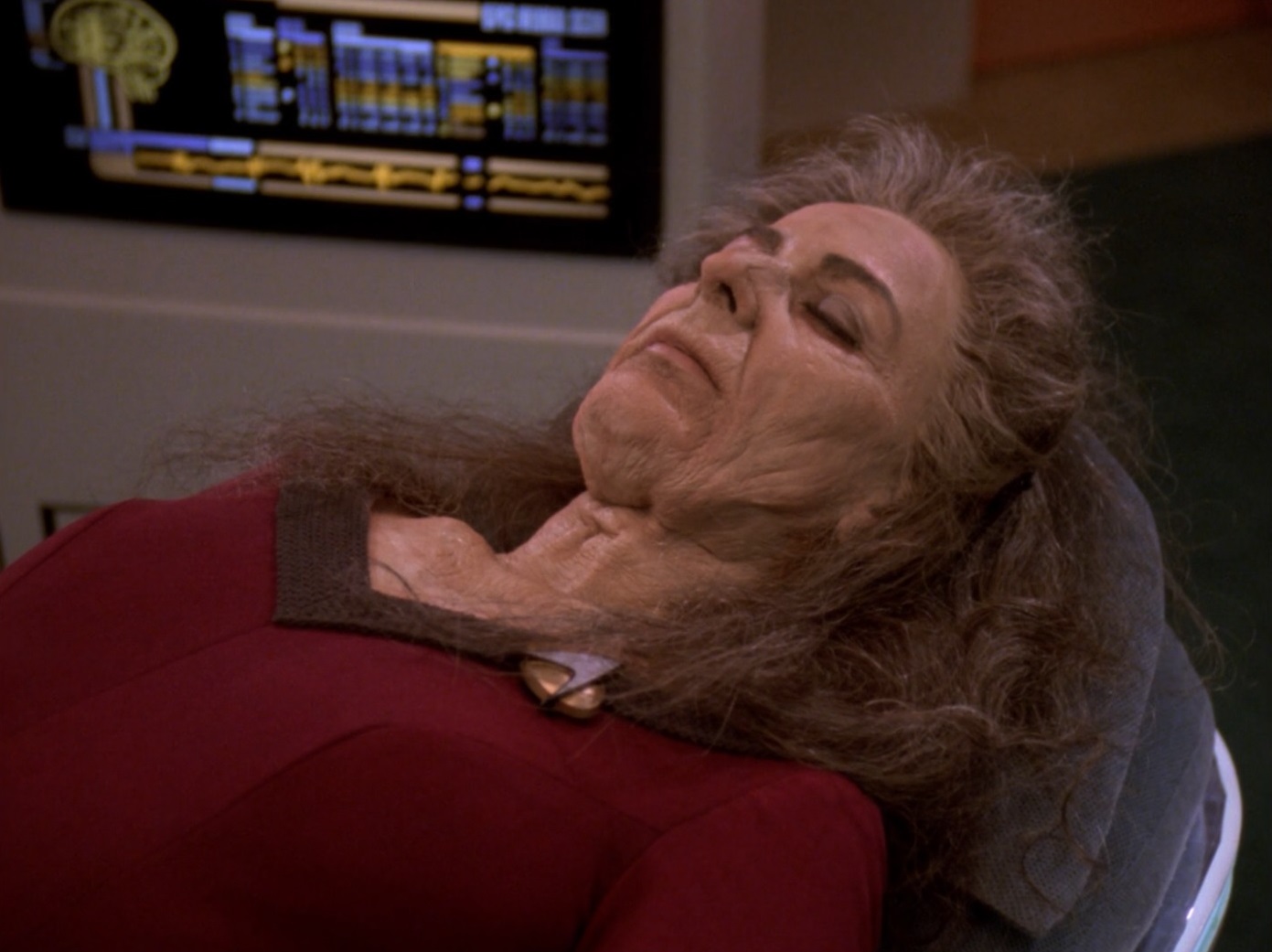In our last module before the final project, we are looking at memory. Star Trek: The Next Generation‘s episode “Measure of a Man” and Marjorie Prime explore interesting aspects of memory and how it connects with our cognition. Let’s take a look.

Star Trek: The Next Generation
In its episode “Measure of a Man”, Data has a one-on-one conversation with Maddox regarding Maddox’s experiment plans. In an attempt to get Data to go along with his plans willingly, he says to Data, “Your memories and knowledge will remain intact.” Data responds, “Reduced to the mere facts of the events. The substance, the flavor of the moment could be lost.” Later Data adds, “While I believe it is possible to download information contained in a positronic brain, I do not believe you have acquired the expertise necessary to preserve the essence of those experiences. There is an ineffable quality to memory which I do not believe can survive your procedure.”
In this scene, Data explains the difference between being able to remember an event and actually feeling the emotions of that event’s memory. He fears of losing the latter. This is quite similar to the VoiceThread’s discussion of when we remember emotions, as recall leads to emotions “both of the memory itself and how we feel about the memory (meta-emotion).” Data could lose that quality in the process of recall.
In the trial, Data mentions how the experiment can cost his life. I think he means quality of life. Losing the emotional aspects of memories breaks the thread of meaning behind those memories. He will simply be an empty shell, quite literally just a machine, or at least the type that Maddox references.
Marjorie Prime
Tess and Jon converse inside the bar by the piano. As they recall the last time they were in the bar, Jon says, “Memory. Sedimentary layers in the brain. You dig in, you know it’s there, you just have to-” and Tess interjects saying, “No, no.” She explains, “William James had the idea, and it’s been confirmed scientifically that memory is not like a well that you dip into or a filing cabinet. When you remember something, you remember the memory. You remember the last time you remembered it, not the source, so it’s always getting fuzzier, like a photocopy of a photocopy. It’s never getting fresher or clearer. So even a very strong memory can be unreliable because it’s always in the process of dissolving.”
Tess’s point is very interesting, but is she quite right about a memory being unreliable because it’s in the process of dissolving? Thinking about the VoiceThread, I don’t believe so. It says that “Memories can change and still be “accurate”.” There is “emotional accuracy” in the memory. Even if a memory becomes fuzzier, you can still feel the emotion from such memory. It’s that “flavor” that Data was talking about. Hypothetically, let’s say I have a memory of a really crappy birthday party in which nobody I invited showed up (this didn’t actually happen I swear). At first, I remember myself crying when my mom brings the cake out. I remember feeling sad, and I feel sad when I think about the memory. As I grow older, I can’t experience the episodic version of the memory because I lost the details about the cake and me crying, but I can experience the repisodic version, the thematic version. I can still remember feeling awful because nobody showed up. So, is the memory really that unreliable as it gets fuzzier? Food for thought.











